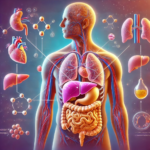💊 Muscle Tear vs. Strain
Muscle injuries are common in both athletes and non-athletes, often occurring during activities that involve sudden, forceful movements or overuse. Muscle tears and strains are two types of muscle injuries, but they differ in severity and presentation. Here are the basics:
- Muscle Strain: A strain, also known as a pulled muscle, occurs when muscle fibers are overstretched or partially torn due to overuse or sudden movements. Strains are graded on a scale from mild (Grade I) to severe (Grade III), with Grade I involving minor stretching, Grade II involving more significant but incomplete tearing, and Grade III indicating a complete rupture of the muscle fibers.
- Muscle Tear: A tear is a Grade III strain, a more severe injury where the muscle fibers are completely torn, often resulting in a loss of function in the affected muscle. Tears can occur at the muscle belly, where the muscle attaches to the tendon, or within the tendon itself.
🤔 Why you need to know:
Distinguishing between a muscle tear and a strain is crucial for appropriate treatment and recovery. Here are the key differences based on signs, symptoms, and imaging findings:
- Signs and Symptoms:
- Strain: Symptoms of a strain include localized pain, muscle stiffness, swelling, and a limited range of motion. The pain is usually mild to moderate and increases with movement or pressure on the affected muscle. Muscle spasms and weakness may also occur, but the muscle retains some function.
- Tear: A muscle tear often presents with sudden, severe pain at the time of injury, accompanied by a popping or snapping sensation. There is significant swelling, bruising, and a noticeable loss of muscle function or strength. In severe cases, a visible deformity or indentation can be seen where the muscle has retracted.
⚠️Warning: Graphic Content
If you have the stomach for it, here is a torn pec muscle injury in real time:
And here is an animation of a muscle repair surgery:
- Complications: Untreated muscle tears can lead to chronic pain, scarring, and muscle weakness. Both strains and tears require proper management, but the approach differs significantly; strains often heal with rest, ice, compression, and elevation (RICE), while tears may require surgical intervention, especially if the muscle or tendon is completely ruptured.
- Prevention Tips: To reduce the risk of muscle injuries, it’s important to warm up properly before physical activity, maintain good flexibility, and strengthen muscles through regular exercise. Listening to your body and avoiding overexertion can also help prevent both strains and tears.
🧠 Trivia:
Muscle tears are most common in the hamstrings, quadriceps, and calf muscles. These large muscle groups are frequently involved in high-speed, high-intensity activities, making them particularly susceptible to both strains and tears.



